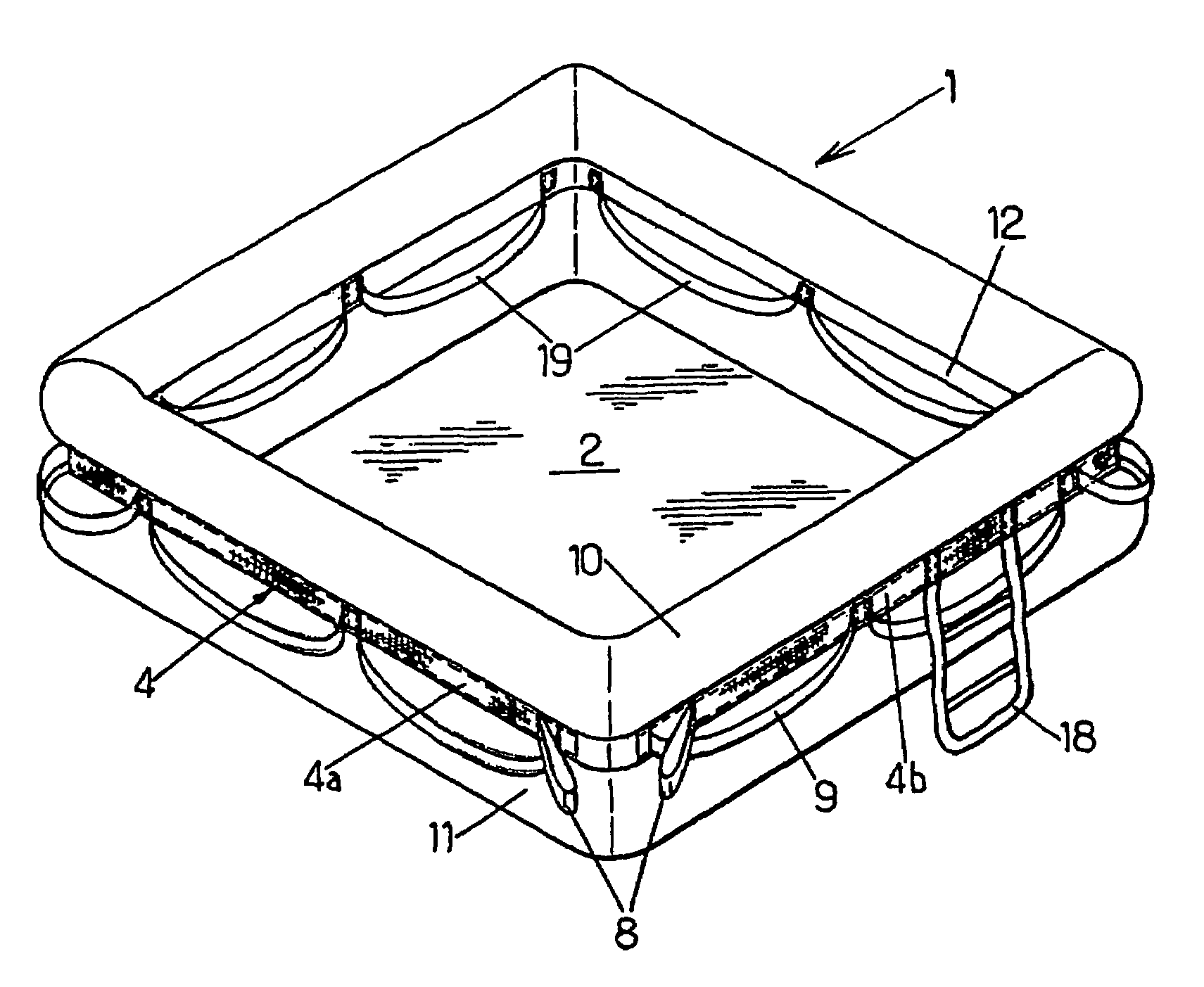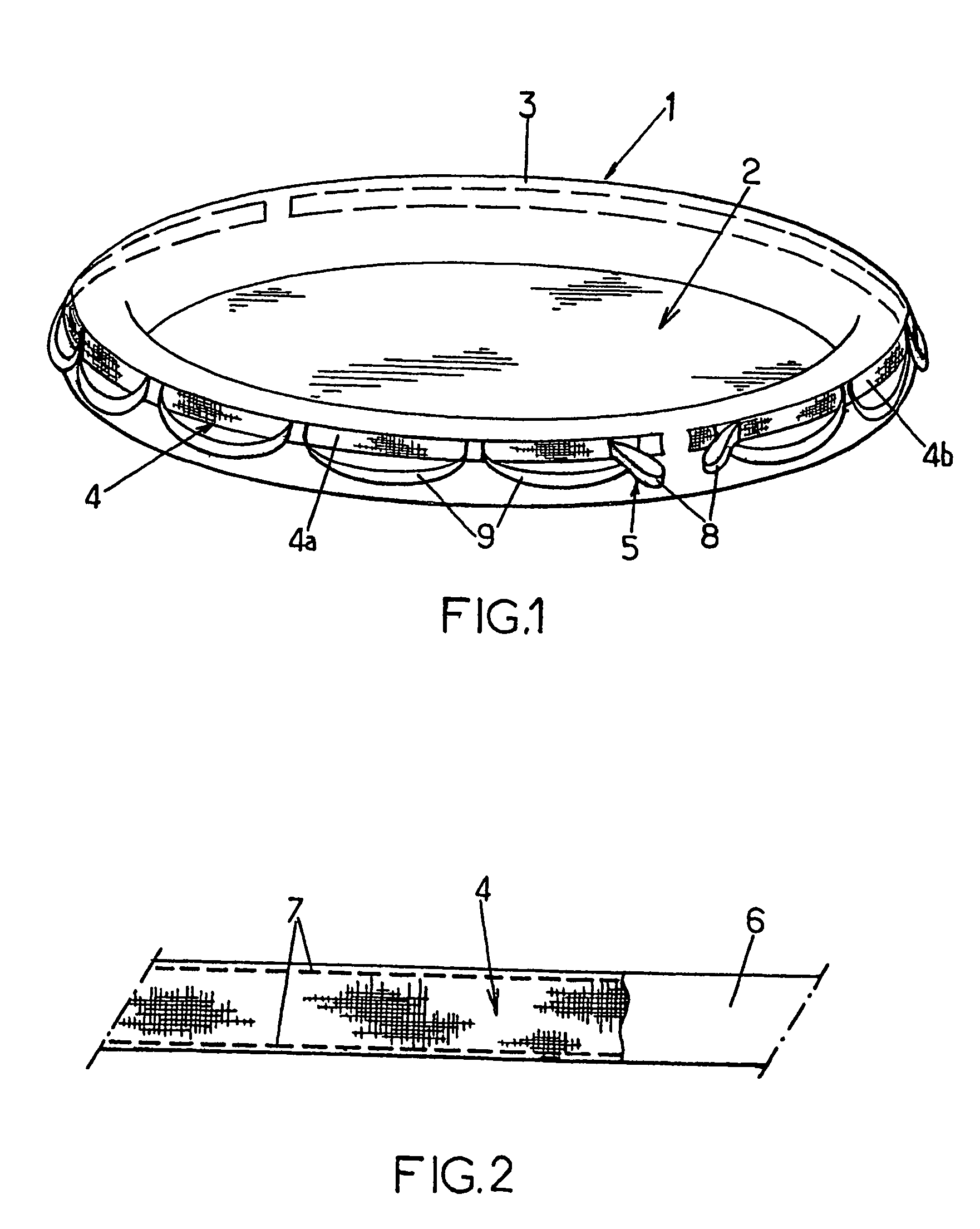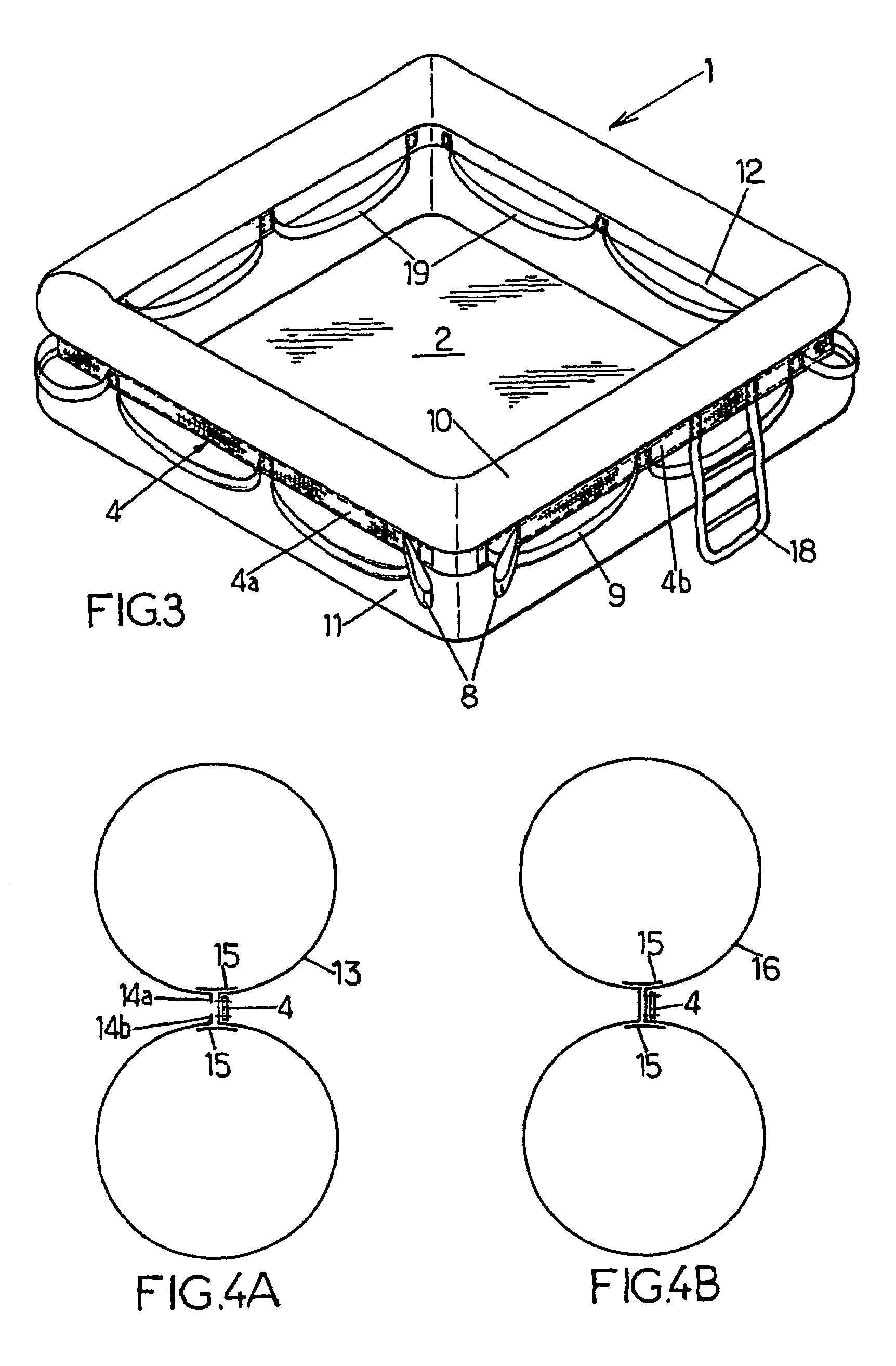Life raft
a life raft and raft body technology, applied in the field of life rafts, can solve the problems of failure of the towing line attachment, loose engagement of the lashing, and risk of failure or tearing under heavy loads, and achieve the effects of excellent flexibility, low cost and high mechanical strength
- Summary
- Abstract
- Description
- Claims
- Application Information
AI Technical Summary
Benefits of technology
Problems solved by technology
Method used
Image
Examples
Embodiment Construction
[0026]Referring initially to FIG. 1, this shows an inflatable life raft comprising a pneumatic float 1 running around the periphery and a flexible bottom 2 fixed underneath the float 1. In this example, the float 1 is a single inflatable tube 3 and is generally circular.
[0027]The invention provides that a belt 4 having good mechanical strength extends all the way around the periphery of the float 1 and is fixed to it all the way along its length, and that this belt 4 supports or incorporates fixing means 5 for at least one towing line.
[0028]In this arrangement, towing forces are taken by the belt alone: this belt is in the general form of a loop running around the float in such a way that, during towing, it is the belt that is towed and that pulls the float which it encircles, no part of the float being at any time subjected to traction. By selecting a belt that possesses the appropriate mechanical strength, the raft is thus able to withstand very high towing forces without damage.
[...
PUM
 Login to View More
Login to View More Abstract
Description
Claims
Application Information
 Login to View More
Login to View More - R&D
- Intellectual Property
- Life Sciences
- Materials
- Tech Scout
- Unparalleled Data Quality
- Higher Quality Content
- 60% Fewer Hallucinations
Browse by: Latest US Patents, China's latest patents, Technical Efficacy Thesaurus, Application Domain, Technology Topic, Popular Technical Reports.
© 2025 PatSnap. All rights reserved.Legal|Privacy policy|Modern Slavery Act Transparency Statement|Sitemap|About US| Contact US: help@patsnap.com



